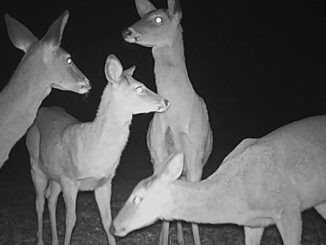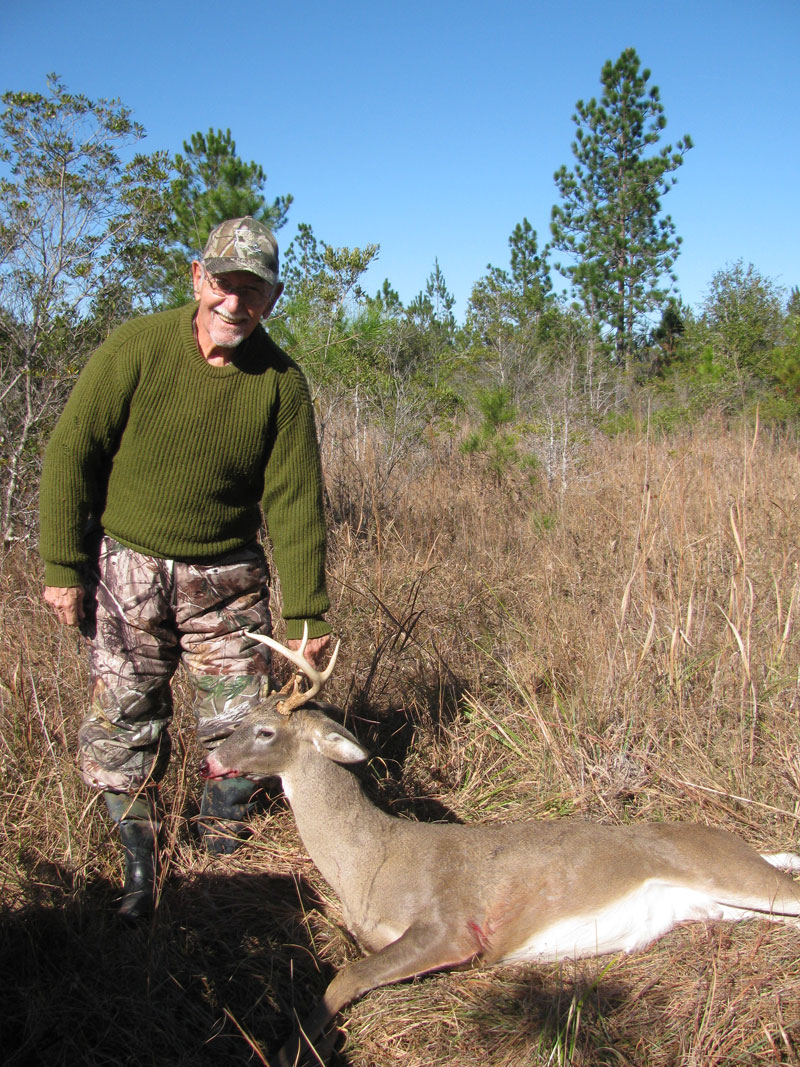 This father-son trip provided an even more fun, rewarding “trophy hunt”
This father-son trip provided an even more fun, rewarding “trophy hunt”
“Forget it,” I sighed and turned and picked up my pace while walking towards the nearby oak bottom. “Just look at all ‘dem 4-Wheeler tracks,” I pointed and nodded sadly. “Looks like we ain’t the only ones who ‘discovered’ this hotspot. Let’s head closer to the bottom.”
But my 96-year-old father didn’t move. Instead, he kept nodding and waving me over while pointing at the semi-muddy ground.
“Look closer, will ya,” he said in Spanish. “Come here and look. These aren’t 4-wheeler tracks, though they might look like it from a distance. They’re deer tracks — one on top of each other, and pointing in two directions,” Dad smirked triumphantly.
I slipped out of the side-by-side seat with a groan, scurried over, bent down….and — AND I”LL BE DOG-GONNED! — they were deer tracks. Dozens of them forming a pattern that from a distance closely resembled ATV tracks!
Slower is better
Let’s face it, a 96-year-old is going to move through the woods a bit slower than the rest of us. When scouting for deer in southeast Louisiana’s notoriously thick and tangled piney woods — slow movement can be a big advantage.
Sure enough, now Dad pointed me in the direction of the nearby shrubbery.
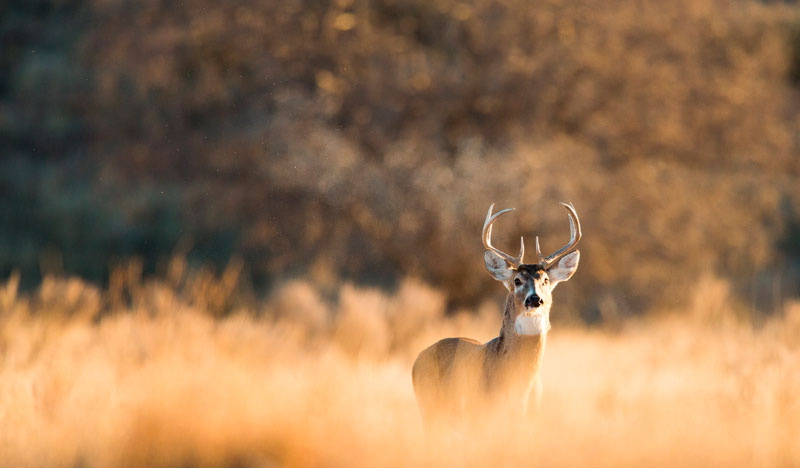
“Looks like a slam-dunk,” he smirked. “Look at all that browsing sign!”
While most of the shrubs surrounding the trail consisted of gallberry (complete with the little black berries), some blackberry and dewberry (“briars”) Smilax (greenbrier,) Japanese privet and Black Titi shrubs were also sprouting in this section of the two-year-old select cut.
As usual in our experience of this area, the gallberry (certainly deer food in piney woods habitat, but not primary browse) was very sparsely browsed, while the “briars,” (dewberry, blackberry) smilax, privet and Titi were much more noticeably shredded of leaves and young branches. So we were definitely closing in on an ambush site.
In the December 2001 issue of Louisiana Sportsman, your humble servant here submitted an article titled “Hunt Hard — Stay Young,” which mostly marveled that a 75-year-old man, my father Humberto N. Fontova, could hunt ducks and deer as fanatically as his kids and grandkids at the time.
And these were not the catered variety of deer hunts. These were and are mostly roughing it hunts on southeast Louisiana piney-woods property for super-wily, hard-hunted deer. I’ve seen “fanatical” and “expert” deer hunters move to southeast Louisiana from the Midwest, northeast or Texas, with a den full of huge-racked bucks employ their “dedication” and “expertise” in our thick, brushy piney-woods habitat — and quickly take up golf.
Here we are again
Little did I dream that I’d be writing on the same theme about my father 21 year later! Well, Humberto N. Fontova still deer hunts as fanatically — and practically in the same manner — at age 96 as he did when featured in the original story. And this deer hunting is still mostly from portable ladder stands in thick timberlands.
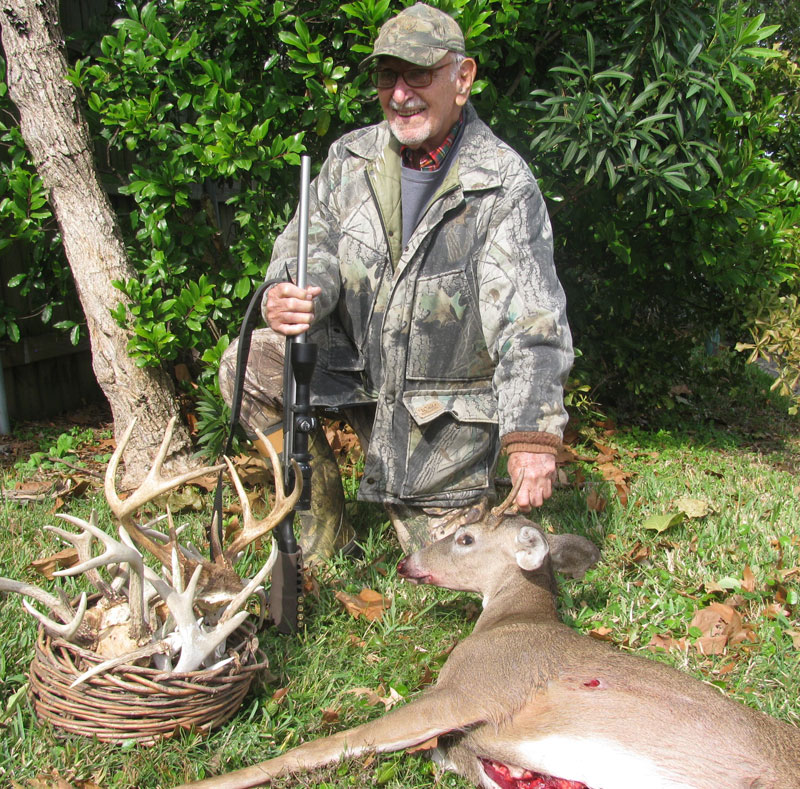
TV health ads bombard us with endless regimens of assorted drugs, potions and exercise for a long, active and happy life. But I’ve yet to see one prescribe hunting. Yet I’ve never seen anything remotely as effective. That the hunts are shared with kids and grandkids, and the trophies (antlers or no antlers — and whatever their size) are shared during family feasts, holiday celebrations, tailgate paw-ties, etc. — just might contribute to the amazing success of the Fontova family’s prescription for a long and happy life.
At our friend and family gatherings, when the topic of deer hunting pops up, we always made a distinction between “ornamental trophies” and “culinary trophies.” Generally speaking, the culinary ones get — by far! — the most appreciation from friends and family. To wit:
OK, so you finally got that 8 or 12 point you’ve been catching on camera for two years! He finally slipped-up and ventured into the food plot 60 seconds before the end of legal shooting time one evening, just as the LSU game ended!…WHOO!-WHOO!
Great! Congrats! Soon he’s up on the den wall. Your hunting buddies are highly impressed and issue hearty back slaps and “congrats” without end.
But what about everybody else? Out of 4.6 million residents, Louisiana has roughly 200,000 deer hunters. So chances are, at any dinner “paaaw-ty,” (or even tailgate “paaaw-ty,” where you’re constantly tapping the iPhone to the buck’s picture) a majority of the attendees wont appreciate that ornamental trophy like us deer hunters do.
But, ah! Serve up those venison cutlets in Burgundy-Mushroom sauce, those Bambi Cheeseburgers in Paradise or those Venison fajitas (seen here: louisianasportsman.com/hunting/deer-hunting/venison-fajitas-with-a-cuban-twist/) and EVERYBODY can join in the congratulations — or at least a much bigger portion than otherwise.
The challenges
Hunt deer in southeast Louisiana’s piney woods and your deer hunting qualifies as among the most challenging on the continent. The challenges are many and varied:
First off, we face relatively low deer numbers per acre. This isn’t fertile farmland or bottomland hardwood mixed with soybean fields, like we find in northeast and north-central portions of our state. Deer don’t eat the pine trees themselves, but they eat just about everything that sprouts in profusion between them: smilax, blackberry, french mullberry, privet, muscadine, arrowhead and yaupon, etc. After clear or select cutting and burning, all of these vines and shrubs sprout in profusion, making the distinction between a “bedding area” and a “feeding area” (that proverbial key in deer-hunting literature to setting up ambushes) practically impossible to decipher.
Worse for hunters, but good for deer, most of this stuff is evergreen. Visibility through these woods and thickets is almost as limited in January as it is in October. Clearcuts, select cuts and a few skinny bottoms offer the only relief.
Some deer, especially “trophies” of the ornamental kind, can live their entire lives in those brambles and never be seen by human eyes — during the day that is. But thing is, hunting in southeast Louisiana, we’ve harvested (as I’m sure many readers have) hard-hunted, spindly spikes and crab-claw-horned bucks that aged out to 3 ½ to 5 ½ years old, the age where a midwest farm deer, a or Woodville, Miss., area deer starts looking like Bullwinkle. Point is: antler size doesn’t necessarily indicate a deer’s age, hence the hunting prowess (or luck) of the hunter.
Scout the browse
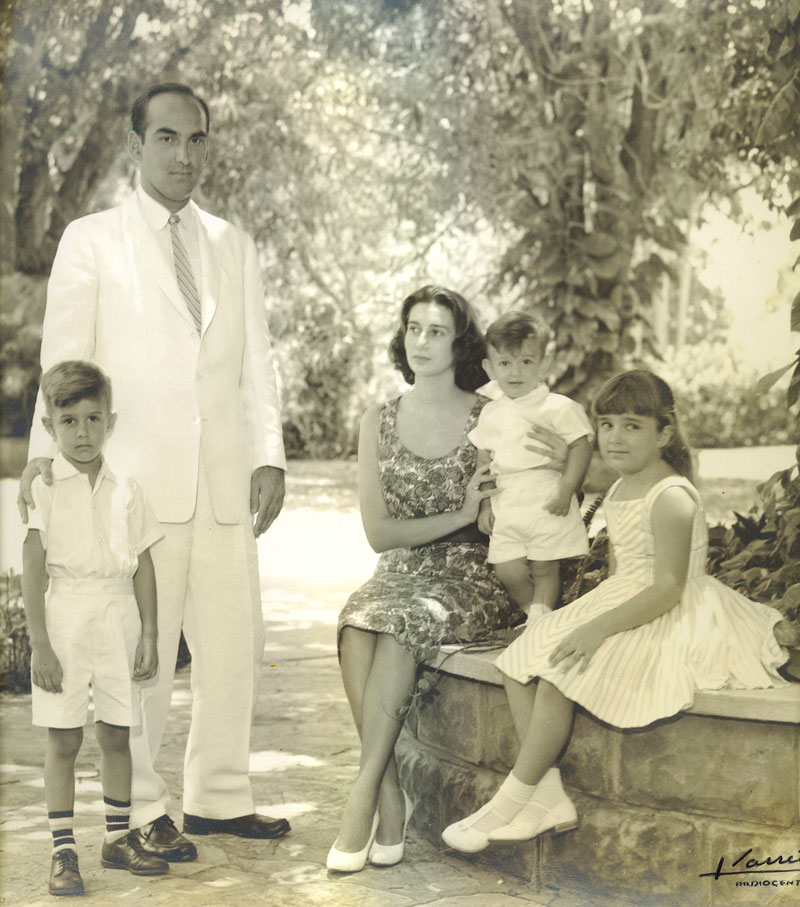
Often overlooked by other hunters, when scouting we always look around for browse lines, featuring the primary browse of the area. Any smilax, Japanese privet, or Titi shrubs near our planned ambush stand sites MUST be heavily browsed. These three plants constitute the “primary browse” in the areas we hunt and also in much of the Florida Parishes’ piney woods. Simply finding these plants isn’t enough. If they’re thick and lush we move on. This means few deer habitually move through the area. Simple as that.
“Good grief!”comes the retort from many readers. “Wouldn’t a couple of game cameras extinguish the need for all this diligence, drudgery and hocus-pocus?!”
Of course it would. As it does for probably 90 percent of today’s deer hunters. But to us scouting is anything but drudgery. Instead it’s among the elements that make for a super- rewarding and genuine hunt.
Another thing we find is that deer trails tend to appear where two landscapes meet. Say, where a bottom of water oaks, tupelo and gums meets pines halfway up a ridge. Or where different age cutovers, clearcuts or select cuts meet. We’ve noticed this same travel pattern in most pine timberland, even in upstate Louisiana, Mississippi and Alabama. Wherever two landscapes meet, deer trails appear.
But these contrasts in landscapes aren’t always apparent from the ground. Often it’s nothing more than, say, the border where a 4 year-old cutover, meets a 6 year-old select cut. Or vise-versa. This is where Google maps come into play. Often we’ve found heavy deer trails in places with no apparent reason for them. Then we get home and focus down on a Google map — “AHA!..see that?..Come see! See how the terrain changes?!”
Call us weird, but that kinda thing gets us more excited on many winter evenings than does the final unmasking of “The Masked Singer,” the naming of the finalists on “The Voice,” or even the winner of the $10,000 Double Jeopardy.
A personal note
We were deer hunting the morning of Nov. 25, 2016 that the news reported Fidel Castro’s death at the age of 90. Our phones were buzzing up a storm making it hard to concentrate on trail-watching. Fidel Castro, after all, was my Dad’s exact age and they’d been classmates at the University of Havana. Shortly after Castro grabbed power, his KGB-trained secret police got wind of my father’s vocal anti-communist views. So they grabbed him and threw him in a cell as a political prisoner — and just as the rest of his family (my mother, 4 year-old brother, 8 year-old sister and 7 year-old me) were boarding a plane for exile in the U.S., with the clothes on our backs as our only possessions.
By some miracle he escaped the firing squads that were murdering thousands of Cubans monthly at the time and finally rejoined his family in New Orleans. Now here was my father happily deer hunting with his children and grandchildren shortly after a glorious Thanksgiving family feast while Fidel Castro met his final judgment.
We didn’t get a deer that day, but I just thought that “human-interest” anecdote might interest readers and point out how precious freedom and this country is.
We followed the deer trail mentioned earlier into a semi-open bottom that met with a section of a four-year old select cut. This spot offered good visibility by the standards of thick pinelands, about 150 yards. So we placed the ladder stand upwind of where two other trails intersected the one mentioned at the start of the article. The tracks were all going in BOTH directions here, an important factor in our experience.
A hundred pounds of corn spread very widely in the “open” area of the thicket and along the three trails leading to it sweetened the setup.
Since I always like to hunt as close as practically possible to Dad, I set up my climber in a small pine on the edge of the thicket about 300 yards away.
Here they came
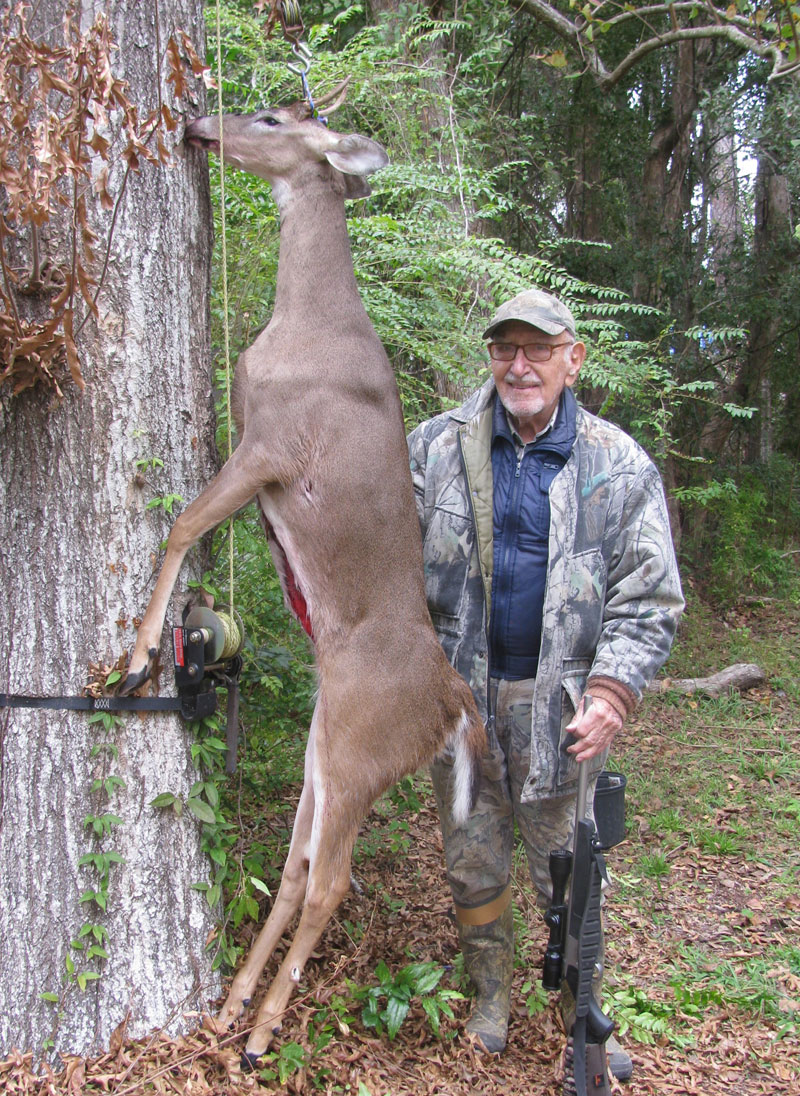
The five-day forecast said a front was on the way. Ideally, it would barrel through a day or two before the hunt, which we planned for the following week. We always do best in those post-front situations, after the heavy wind dies down. And on frosty mornings we spot better movement during late morning (9:30 to 11:30 a.m.), after the frost has melted off from the sun.
Oddly enough, the front barreled through exactly as predicted! So our hopes were high as we crunched through frost on the way to our stands. But by 10:25 a.m., with the sun high, I was shrugging off the hunt and giving deep thanks for the simple blessing of a gorgeous winter morning in the woods with my 96-year-old dad …
Then I spotted movement through the pines on my left…Another blue-jay going after the corn? Or another crow? Or another squirrel?
No. It was actually a deer! — with another one close behind it. My heart started hammering. The does were maybe 70 yards out crossing through a sage clearing, barely visible through the select-cut pines. As always in these situations, the shakes hit me big time! But I wasn’t going to shoot at moving deer.
“Surely there’s a buck chasing them?” I thought to myself.
“BLAM!” Just then a nearby shot jolted my gaze to the right. I stood trembling in the climbing stand. Good thing I was harnessed up good and tight.
“HAD to be Dad!” I thought to myself. But he couldn’t see the does from his stand! “Wonder what he shot at?” Meanwhile the does picked up speed and entered the thicket with white flags bouncing crazily.
Finally my convulsions subsided — just as the iPhone buzzed.
“Nice buck DOWN!” text read. “I can SEE him!”
“Be RIGHT THERE!” I said. So that’s what he shot at. I whooped!
My hands were shaking crazily while humping down the tree and unharnessing. I hit the ground stumbling, and continued stumbling towards Dad’s stand. I saw the trophy from 50 yards off. When I got to it, Dad was lifting it by the (spike) antlers.
A culinary trophy was down! Now commenced a serious session of whoops and “abrazos” (bear hugs.)
“You know that 12-point ornamental trophy I shot on the catered hunt in Texas?” Dad smirked. “That was a fun trip for sure. The bouree’ games, the food, the friends. But it wasn’t much of an actual hunt. This spike is much more rewarding as trophy. This culinary trophy was actually hunted!”

